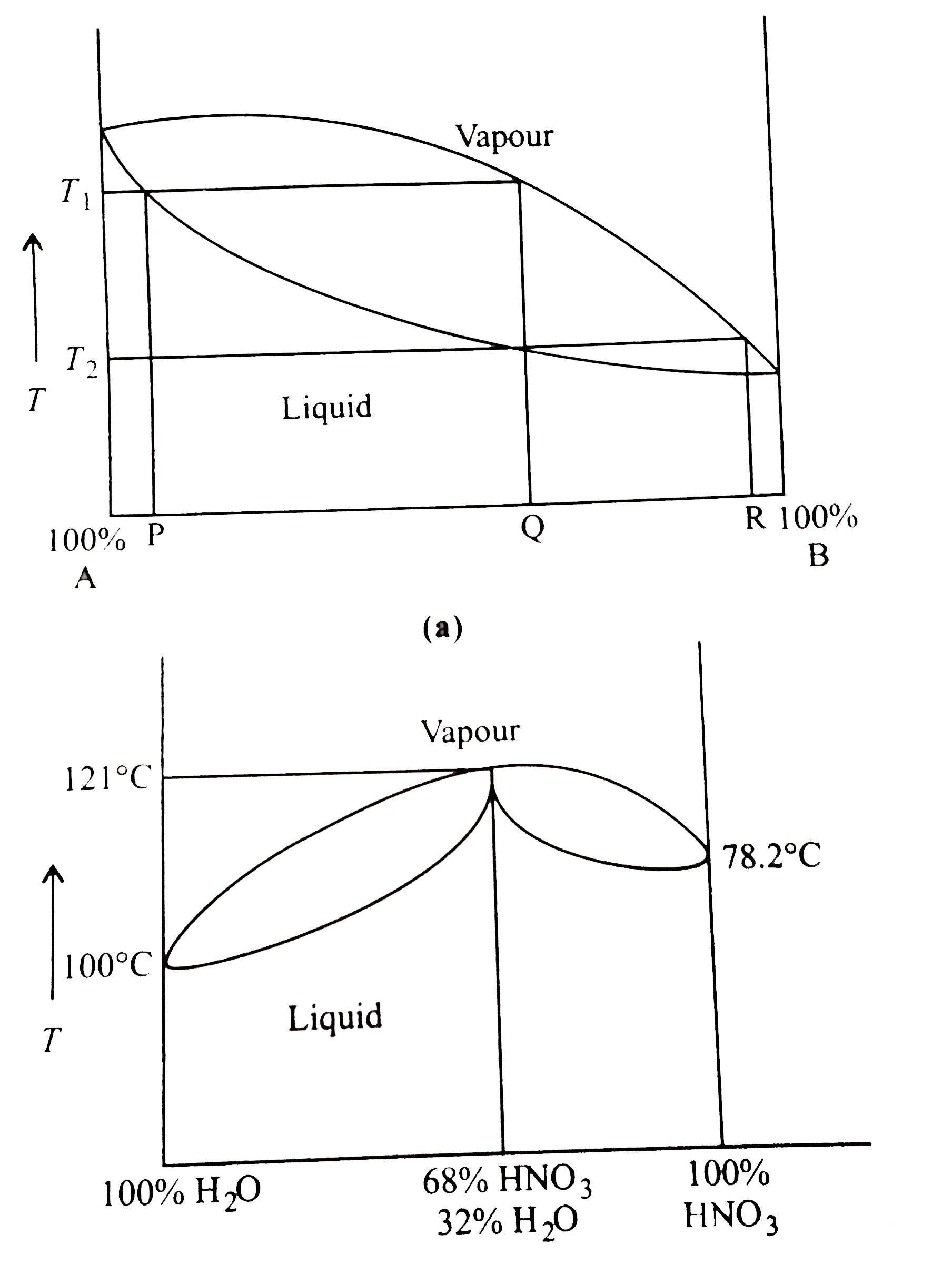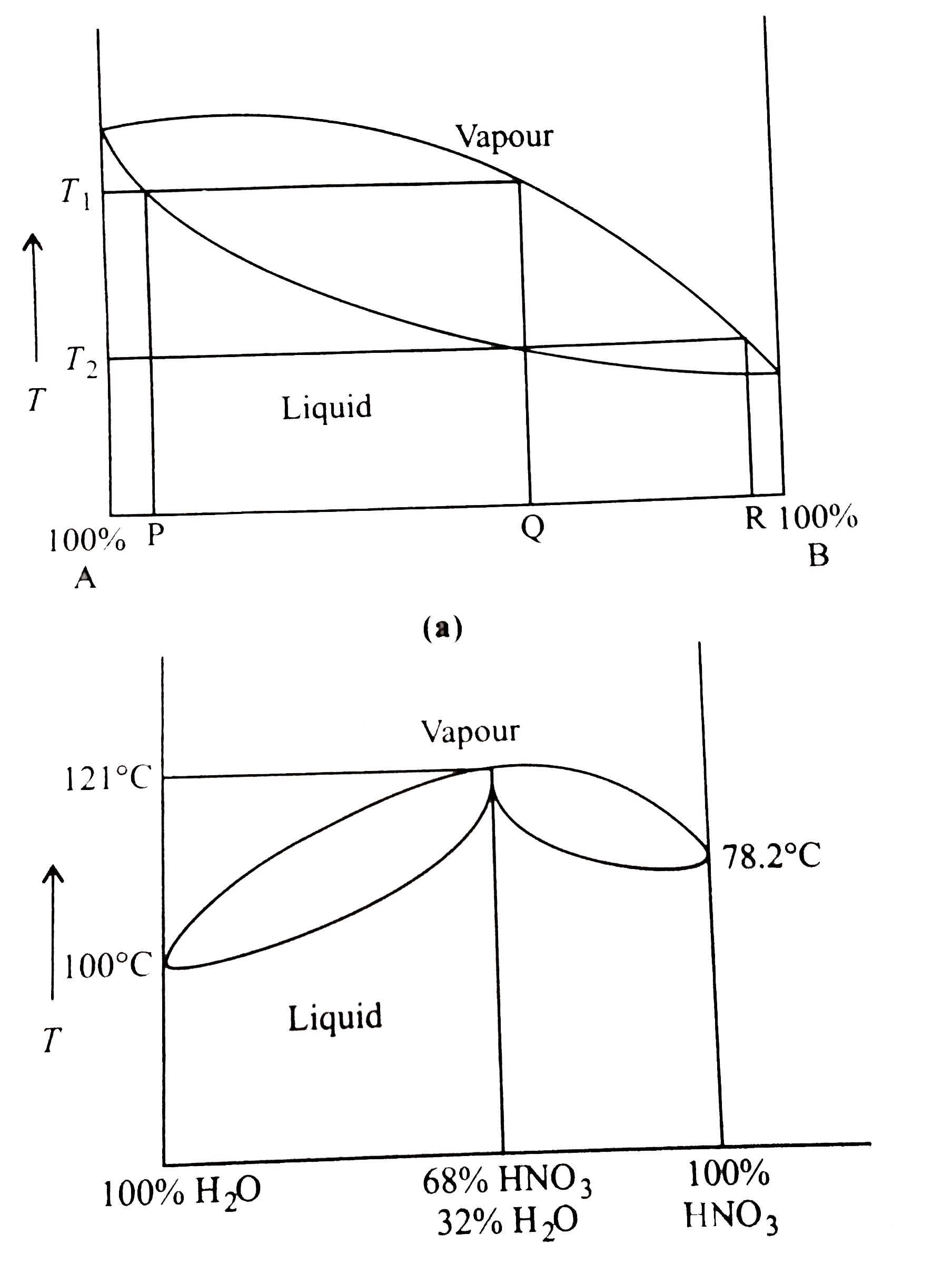Azeotropic mixtures can be separated by distillation of solution.
To determine whether the statement "Azeotropic mixtures can be separated by distillation of solution" is true or false, we need to analyze the characteristics of azeotropic mixtures and the distillation process.
1. Understanding Azeotropic Mixtures:
- An azeotropic mixture is a specific type of binary liquid mixture that has a constant boiling point and maintains the same composition in both the liquid and vapor phases during boiling. This means that the ratio of components in the vapor phase (y) is equal to the ratio in the liquid phase (x).
2. Characteristics of Azeotropes:
- Azeotropes are often referred to as constant boiling mixtures because they do not change composition when they boil. This is a key characteristic that distinguishes them from other mixtures.
3. Distillation Process:
- Distillation is a separation technique that relies on differences in boiling points of components in a mixture. In typical distillation, components with lower boiling points vaporize first and can be collected separately.
4. Limitation of Distillation for Azeotropes:
- Since azeotropes boil at a constant temperature and maintain the same composition in both phases, distillation cannot effectively separate the components. When an azeotropic mixture is distilled, the vapor produced has the same composition as the liquid, meaning that both phases contain the same ratio of components.
5. Conclusion:
- Therefore, the statement "Azeotropic mixtures can be separated by distillation of solution" is false. Azeotropic mixtures cannot be separated into their pure components through simple distillation.
Final Answer:
The statement is false because azeotropic mixtures cannot be separated by distillation due to their constant composition in both liquid and vapor phases.
---
- An azeotropic mixture is a specific type of binary liquid mixture that has a constant boiling point and maintains the same composition in both the liquid and vapor phases during boiling. This means that the ratio of components in the vapor phase (y) is equal to the ratio in the liquid phase (x).
- Azeotropes are often referred to as constant boiling mixtures because they do not change composition when they boil. This is a key characteristic that distinguishes them from other mixtures.
- Distillation is a separation technique that relies on differences in boiling points of components in a mixture. In typical distillation, components with lower boiling points vaporize first and can be collected separately.
- Since azeotropes boil at a constant temperature and maintain the same composition in both phases, distillation cannot effectively separate the components. When an azeotropic mixture is distilled, the vapor produced has the same composition as the liquid, meaning that both phases contain the same ratio of components.
- Therefore, the statement "Azeotropic mixtures can be separated by distillation of solution" is false. Azeotropic mixtures cannot be separated into their pure components through simple distillation.
The statement is false because azeotropic mixtures cannot be separated by distillation due to their constant composition in both liquid and vapor phases.
Topper's Solved these Questions
- SOLUTIONSBOOK - CENGAGE CHEMISTRY ENGLISHCHAPTER - SOLUTIONSEXERCISE - Exercises Archives (Linked Comprehension)
3 Videos
- SOLUTIONSBOOK - CENGAGE CHEMISTRY ENGLISHCHAPTER - SOLUTIONSEXERCISE - Exercises Archives (Multiple Correct)
17 Videos
- SOLUTIONSBOOK - CENGAGE CHEMISTRY ENGLISHCHAPTER - SOLUTIONSEXERCISE - Exercise(Fill In The Blanks)
19 Videos
- SOLID STATEBOOK - CENGAGE CHEMISTRY ENGLISHCHAPTER - SOLID STATEEXERCISE - Ex 1.2 (Objective)
9 Videos
- SURFACE CHEMISTRYBOOK - CENGAGE CHEMISTRY ENGLISHCHAPTER - SURFACE CHEMISTRYEXERCISE - Archives Subjective
2 Videos
Similar Questions
Azeotropic mixtures are
View SolutionAssertion : Compounds with difference in their boiling points by about 30∘C can be separated by simple distillation.
Reason : All liquid mixtures can be separated by distillation method.
View SolutionWhat type of mixtures can be separated by filtration?
View SolutionWhich of the following mixtures cann be separated by using excess NH3 solution?
View SolutionWhich of the following mixtures cann be separated by using excess NH3 solution?
View Solutionrepresents the distillation of mixture of liquid A and liquid B which gives both of pure liquid A and B . Represents the azeotropic mixture of HNO3 and H2O which distillation gives an azeotropic mixture and either of pure liquid. We cannot separate both the pure liquid, i.e., H2O and HNO3.
What is the result of distilling a mixture of 80%HNO3 and 20%H2O?
(a)Pure H2O and azeotropic mixture can be separated.
(b)Pure H2O and pure HNO3 can be separated.
(c)Pure HNO3 and azeotropic mixture can be separated.
(d)None of these
View Solutionrepresents the distillation of mixture of liquid A and liquid B which gives both of pure liquid A and B . Represents the azeotropic mixture of HNO3 and H2O which distillation gives an azeotropic mixture and either of pure liquid. We cannot separate both the pure liquid, i.e., H2O and HNO3.

What is the result of distilling a mixture of 50%HNO3 and 50%H(2)O ?
a.Pure water and azeotropic mixtue can be separated.
b.Pure H2O and pure HNO3 can be separated.
c.Pure HNO3 and azeotropic mixture can be separated.
d.None of these
View SolutionThe solution which boil at constant temperature like a pure liquid and possess same composition in liquid as well as vapour state are called azeotropes. The components of azetropes cannot be separated by fractional distillation. Only non-ideal solutions form azeotropes. Solutions with negative deviation form maximum boiling azeotrope and the solutions with positive deviation form minimum boiling azeotrope. The boiling point of an azeotrope is never equal to the boiling points of any of the components of the azeotrope.
Answer the following question:
The azeotropic solutions of two miscible liquids
The azeotropic mixture of water and HCl boils at 108.5∘C. This solution is
View SolutionThe solution which boil at constant temperature like a pure liquid and possess same composition in liquid as well as vapour state are called azeotropes. The components of azetropes cannot be separated by fractional distillation. Only non-ideal solutions form azeotropes. Solutions with negative deviation form maximum boiling azeotrope and the solutions with positive deviation form minimum boiling azeotrope. The boiling point of an azeotrope is never equal to the boiling points of any of the components of the azeotrope.
Answer the following question:
The azeotropic solutions of two miscible liquids
View SolutionThe solution which boil at constant temperature like a pure liquid and possess same composition in liquid as well as vapour state are called azeotropes. The components of azetropes cannot be separated by fractional distillation. Only non-ideal solutions form azeotropes. Solutions with negative deviation form maximum boiling azeotrope and the solutions with positive deviation form minimum boiling azeotrope. The boiling point of an azeotrope is never equal to the boiling points of any of the components of the azeotrope.
Answer the following question:
The azeotropic solutions of two miscible liquids
Solutions which distill without any change in composition or temperature are called
View Solution
